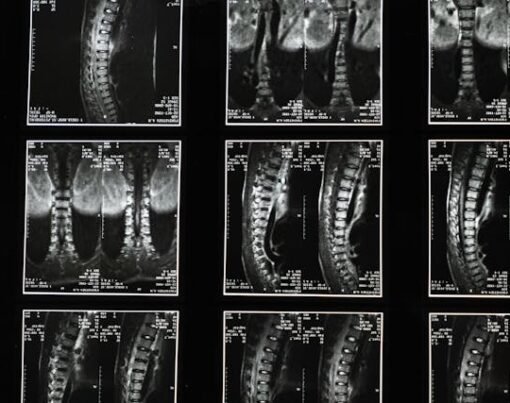No one desires to fall victim to transmitting bloodborne pathogens, considering the potential fatality of these microorganisms present in human blood and various bodily fluids, which can lead to severe diseases. Understanding the possible modes of transmission is the knowledge that everyone would want to acquire.
This goal of preventing their spread and safeguarding public health can manifest in many ways. There are Bloodborne Pathogens course training and classes where we can learn more about our roles in preventing transmissions from happening.
We will delve into the transmission mechanisms for bloodborne pathogens and explore preventive measures in detail.
Table of Contents
Bloodborne Pathogens Transmission
Bloodborne pathogens transmission can happen in several different ways. Attending a bloodborne pathogens course is a way to uncover in-depth information about this. But here are a few mechanisms through which bloodborne infections are spread.
Direct Contact
Direct contact with contaminated body fluids and blood is one of the main ways bloodborne infections are spread. This can happen when someone touches exposed wounds, mucous membranes, or broken skin. Examples of direct contact transmission include blood exposure during medical procedures, sharing infected needles, and needlestick injuries.
Needlestick Injuries
Doctors, nurses, and laboratory technicians in the healthcare industry are likely to get needlestick wounds. If the needle has come into touch with contaminated blood or body fluids, accidental pricks with contaminated needles may cause the transfer of bloodborne diseases. Sharps management and disposal properly are essential in avoiding such accidents.
Physical Contact
Physical or sexual contact may spread several bloodborne viruses, including the hepatitis B virus (HBV) and the human immunodeficiency virus (HIV). Unprotected sexual contact can increase the chance of transmission, particularly when there are open sores, ulcers, or other types of mucosal injury.
Mother-to-Child Transmission
Bloodborne pathogens can spread to a pregnant woman’s unborn child during pregnancy, delivery, or nursing. In the Bloodborne Pathogens course, we will discover the scientific explanations of how and why mothers might transfer bloodborne pathogens even if the babies are still unborn.
Contaminated Objects
Contaminated objects such as needles, razors, or any medical equipment that has not undergone proper sterilization can be tools for spreading bloodborne pathogens.
Preventing Bloodborne Pathogens Transmission
A significant factor in decreasing the spread of bloodborne infections is prevention. A Bloodborne Pathogens Course may benefit this situation by arming participants with the necessary knowledge and abilities to implement sensible safety measures. Here’s a list of Preventative steps you can do.
Universal Precautions
Healthcare personnel and anybody exposed to blood or bodily fluids should follow universal measures. Using PPE or proper personal protective equipment, such as masks, gloves, and goggles, to avoid contact entails considering all human fluids, including blood, potentially contagious.
Safe Disposal and Handling
Contaminated objects must be handled and disposed of properly. Discard sharp objects in certified puncture-resistant containers, and contaminated surfaces must undergo proper disinfection immediately.
The Bloodborne Pathogens Course also covers proper waste management, which is crucial for disposing of contaminated objects to avoid transmission.
Vaccination
Vaccination can offer resistance against several bloodborne infections, including hepatitis B. Healthcare professionals and those in high-risk professions should get the required vaccines to reduce the disease risk.
Safe Sexual Practices
The risk of sexually transmitted bloodborne illnesses like Human Immunodeficiency Virus (HIV) can be reduced by wearing condoms regularly and appropriately.
Education and Awareness
Promoting education and awareness about bloodborne pathogens is crucial for preventing transmission. Bloodborne Pathogens Course classes can give people the information and abilities to comprehend the risks, identify possible dangers, and take the required safeguards. Education and awareness lower the risk of infection and protect everyone involved.
Importance of Bloodborne Pathogens Course
For the protection and well-being of employees and the general public, thorough training is critical to jobs where there is a danger of exposure to blood or other potentially infectious materials.
The bloodborne pathogens course provides students with vital information on the characteristics of bloodborne diseases, means of transmission, methods of prevention, and how to utilize personal protective equipment. An individual may successfully reduce risks, implement the proper controls, and maintain a safe workplace by completing a bloodborne pathogens course.
Frequently Asked Questions:
How are bloodborne pathogens least likely to be transmitted?
Bloodborne pathogens are most likely to spread through contact with blood or bodily fluids from contaminated objects or tools that can pierce the skin. Contaminated objects that can penetrate the skin include needles, scalpels, broken glass, broken capillary tubes, and exposed ends of dental wires.
Which bloodborne pathogen is easily transmitted?
Hepatitis B (HBV), a viral liver infection, is highly contagious and effectively spreads by contact with infectious blood or bodily fluids through the skin or mucous membranes.
Are bloodborne pathogens easily transmitted through sweat?
No, it has not been proven that sweat can transmit bloodborne pathogens. However, bloodborne pathogens may contain minimal amounts in saliva and tears.
The Bottom Line: What We Know
Understanding how bloodborne pathogens are transmitted is essential to stop the spread of infectious illnesses. Individuals can acquire the information and skills required to protect themselves and others from these deadly diseases by taking a thorough Bloodborne Pathogens Course.
We can reduce the dangers of bloodborne diseases and make the world better for everyone by spreading knowledge, raising awareness, and taking the necessary safeguards.










